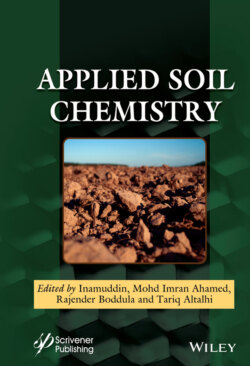Читать книгу Applied Soil Chemistry - Группа авторов - Страница 27
1.2.8 Fire Impacts on Soil Characteristics
ОглавлениеAcross the world, fire is relatively frequent but intermittent natural phenomenon impacting large tracts of land. In addition to natural causes of land fires (lightning strikes, volcanic activity, etc.) there are anthropogenic causes such as crop residue burning, forest clearance, accidents, and arson. Isolated, high-latitude wetlands are much less likely to experience natural land fires caused by lightning strikes [39] than hotter drier regions close to human population centers, where substantial quantities of dry biomass at the land surface is more easily ignited.
Seasonal burning to contain vegetation is a land management technique used in some areas. Although this removes biomass and temporarily reduces carbon input to the underlying soils [40], this practice can ultimately stimulate new, more rapid vegetation growth that will, for a time, enhance carbon input to the soil. The addition of some “charcoal” or charred carbon-rich material to the soil following episodes of burning also contributes to the inert carbon matter in the soil. This component, and artificially produced biochar additions, acts to stabilize some of the carbon within fire-affected or biochar-treated soils. Whether induced naturally or for land management purposes, there is a risk that land fires can ultimately ignite the underlying soils and peats. If this occurs, it releases huge quantities of CO2 to the atmosphere, and it reduces or removes the carbon store in the soils that have taken millennia to accumulate. Such outcomes have been observed associated with forest clearances in Brazil and Indonesia and are likely intermittent natural events over geological time scales.
